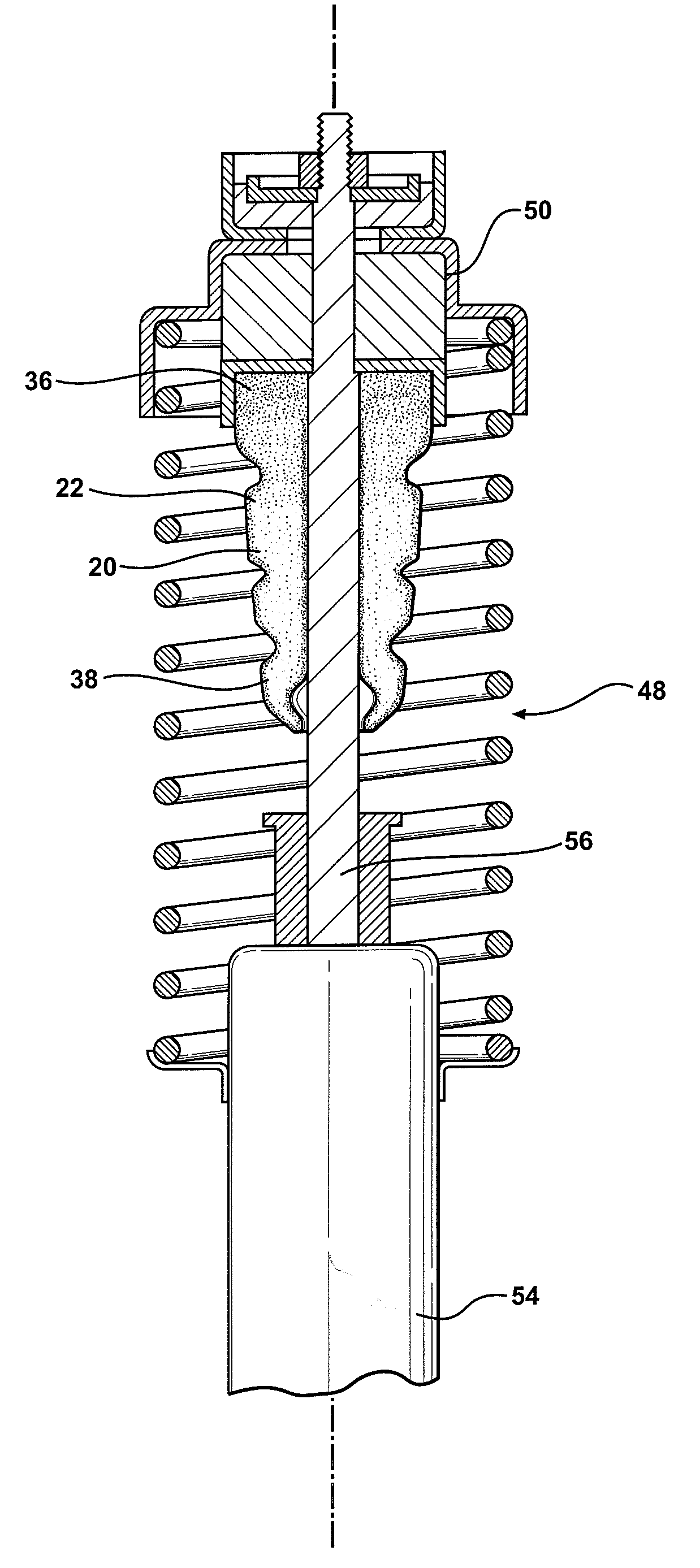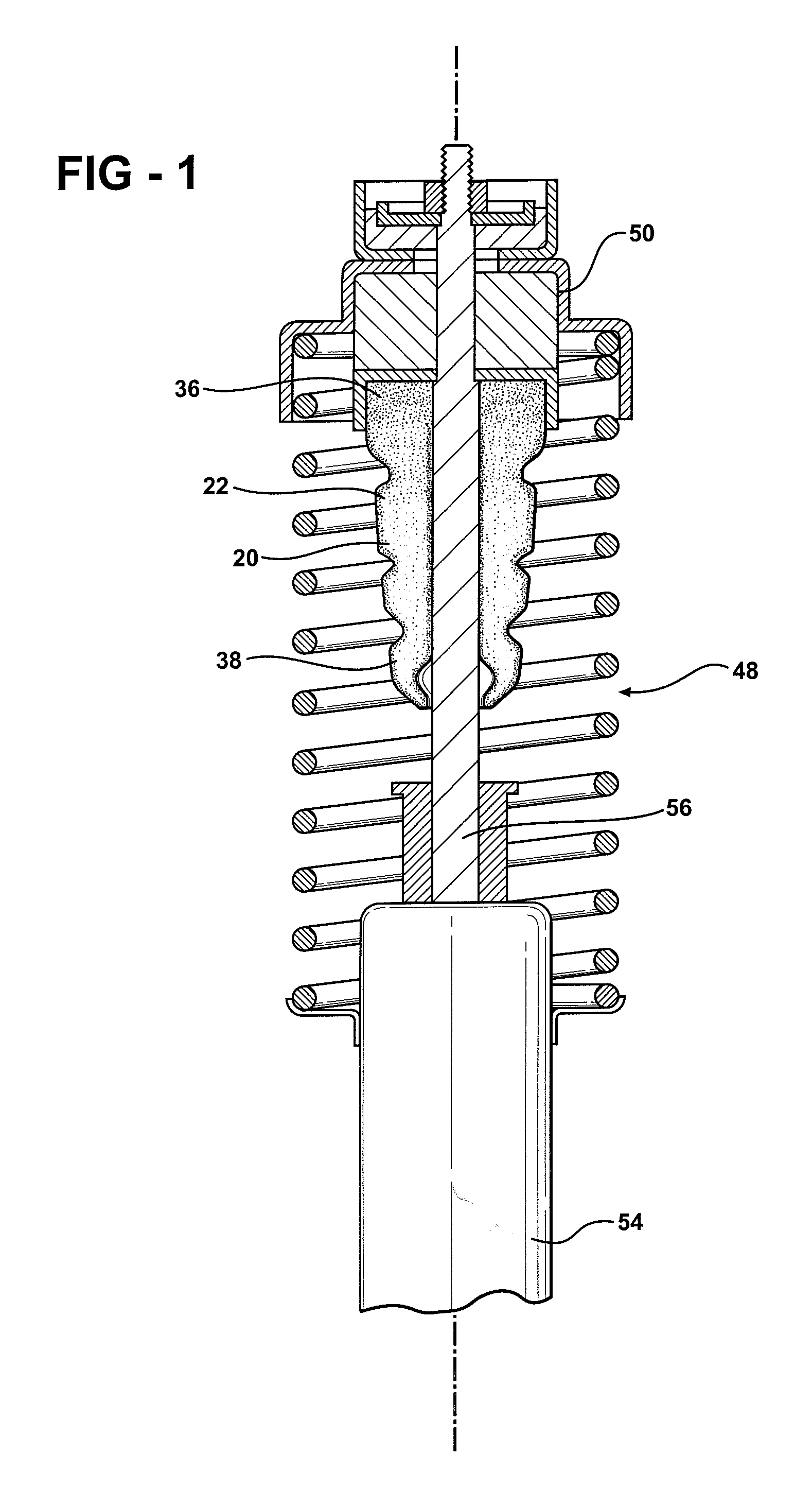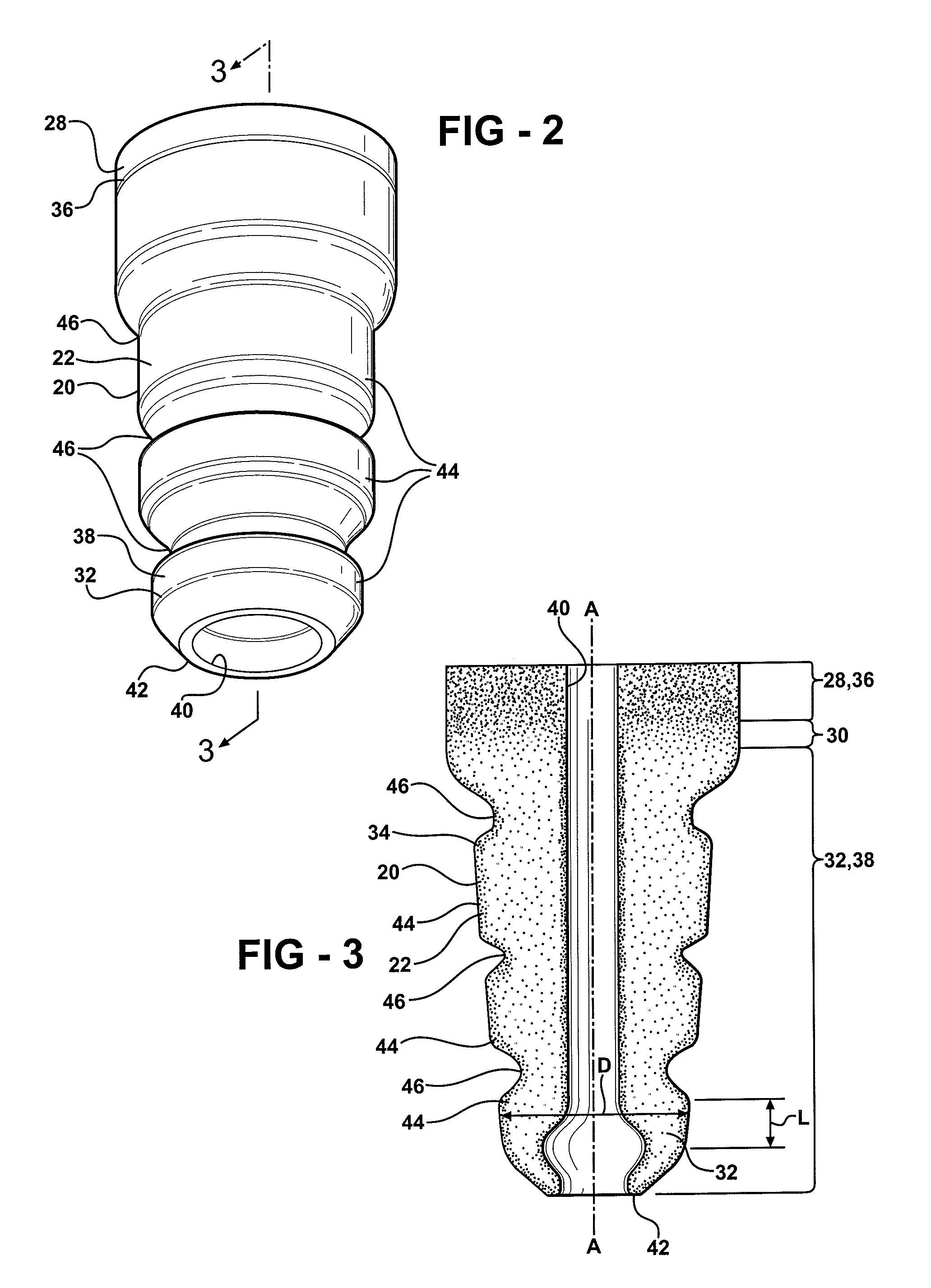One-piece microcellular polyurethane insulator having different densities
a micro-cellular polyurethane and insulator technology, applied in the field of insulators for vehicles, can solve the problems of increasing the cost of manufacturing such insulators, and achieve the effect of increasing the block height, and reducing the cost of manufacturing insulators
- Summary
- Abstract
- Description
- Claims
- Application Information
AI Technical Summary
Benefits of technology
Problems solved by technology
Method used
Image
Examples
first embodiment
[0032]In the first embodiment, as shown in FIGS. 1-3, the first portion 28 is a shoulder portion 36 and the second portion 32 is a projection portion 38 such that the insulator 20 defines the jounce bumper 22. The intermediate portion 30 extends between the shoulder portion 36 and the projection portion 38. Specifically, the shoulder portion 36 extends along the axis A, the projection portion 38 extends along the axis A, and the intermediate portion 30 is disposed between the shoulder portion 36 and the projection portion 38 along the axis A.
[0033]The shoulder portion 36 defines the first density and the projection portion 38 defines the second density different from the first density. The intermediate portion 30 has a transitional density transitioning between the first density of the shoulder portion 36 and the second density of the projection portion 38.
[0034]Preferably, the first density of the shoulder portion 36 is greater than the second density of the projection portion 38 s...
second embodiment
[0046]In the second embodiment, as shown in FIGS. 5-7, the first portion 128 is a bottom portion 58 and the second portion 132 is a top portion 60 such that the insulator 120 defines the body insulator 24. The intermediate portion 130 extends between the bottom portion 58 and the top portion 60.
[0047]Specifically, the bottom portion 58 extends along the axis A, the top portion 60 extends along the axis A, and the intermediate portion 130 is disposed between the bottom portion 58 and the top portion 60 along the axis A,
[0048]The bottom portion 58 portion defines the first density and the top portion 60 defines the second density different from the first density. The intermediate portion 130 has the transitional density transitioning between the first density of the bottom portion 58 and the second density of the top portion 60.
[0049]Preferably, the first density of the bottom portion 58 is greater than the second density of the top portion 60 such that the compressibility of the top ...
third embodiment
[0056]In the third embodiment, the first portion 228 is a lip 76 and the second portion 232 is a rim 78 such that the insulator 220 defines the coil spring isolator 26. The intermediate portion 230 extends between the lip 76 and the rim 78.
[0057]Specifically, the lip 76 defines the first density and the rim 78 defines the second density. The intermediate portion 230 has the transitional density transitioning between the first density of the lip 76 and the second density of the rim 78.
[0058]Preferably, the first density of the lip 76 is greater than the second density of the rim 78 such that the compressibility of the rim 78 is greater than the compressibility of the lip 76. In other words, the rim 78 deforms more than the lip 76 when subject to a load.
[0059]More specifically, the lip 76, the intermediate portion 230, and the rim 78 are integrally formed of common homogenous MCU material for defining a one-piece coil spring isolator 26 having different densities. In other words, the ...
PUM
 Login to View More
Login to View More Abstract
Description
Claims
Application Information
 Login to View More
Login to View More - R&D
- Intellectual Property
- Life Sciences
- Materials
- Tech Scout
- Unparalleled Data Quality
- Higher Quality Content
- 60% Fewer Hallucinations
Browse by: Latest US Patents, China's latest patents, Technical Efficacy Thesaurus, Application Domain, Technology Topic, Popular Technical Reports.
© 2025 PatSnap. All rights reserved.Legal|Privacy policy|Modern Slavery Act Transparency Statement|Sitemap|About US| Contact US: help@patsnap.com



